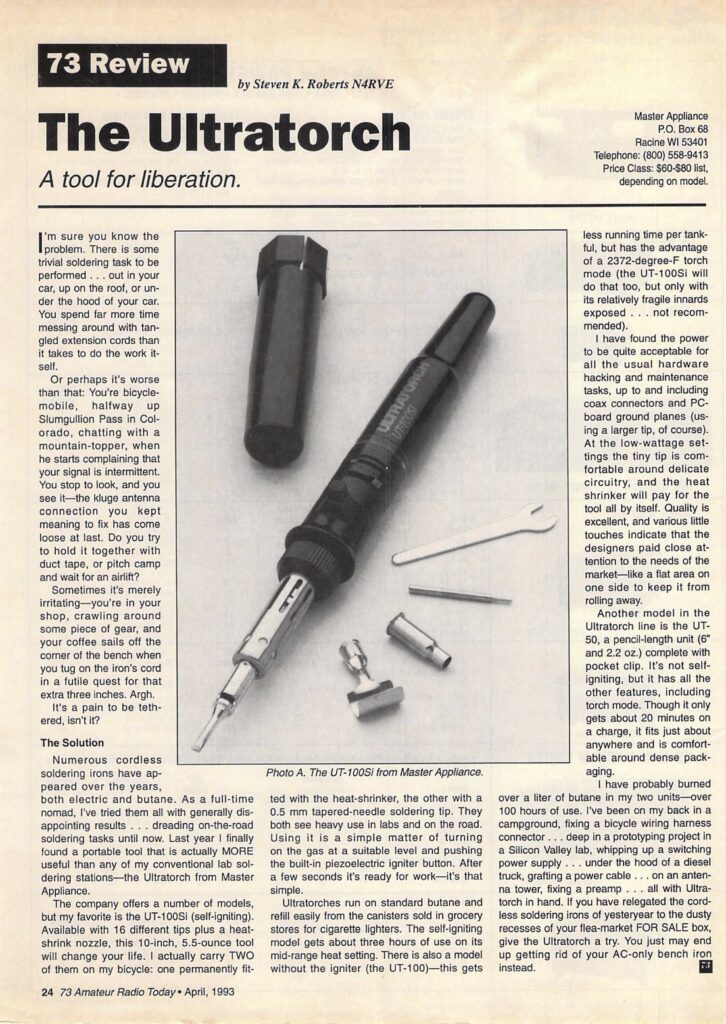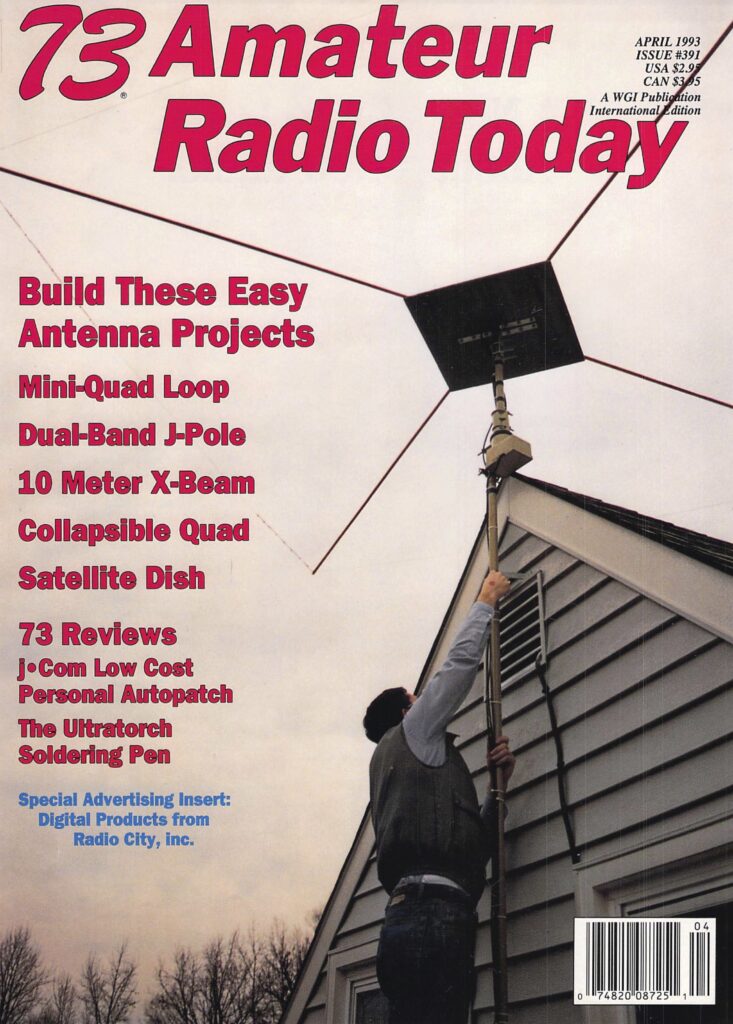
Ultratorch Review
I fell in love with the Ultratorch butane soldering irons from Master Appliance after visiting them in Racine during the BEHEMOTH adventure, then incorporating two of them into my mobile lab. This article describes these lovely little tools… written for 73 Amateur Radio Today magazine.
The Ultratorch — a Tool for Liberation
by Steven K. Roberts N4RVE
73 Amateur Radio
April, 1993

l’m sure you know the problem. There is some trivial soldering task to be performed… out in your car, up on the roof, or under the hood of your car. You spend far more time messing around with tangled extension cords than it takes to do the work itself.
Or perhaps it’s worse than that: You’re bicycle-mobile, halfway up Slumgullion Pass in Colorado, chatting with a mountain-topper, when he starts complaining that your signal is intermittent. You stop to look, and you see it—the kluge antenna connection you kept meaning to fix has come loose at last. Do you try to hold it together with duct tape, or pitch camp and wait for an airlift?
Sometimes it’s merely irritating—you’re in your shop, crawling around some piece of gear, and your coffee sails off the corner of the bench when you tug on the iron’s cord in a futile quest for that extra three inches. Argh.
It’s a pain to be tethered, isn’t it?
The Solution
Numerous cordless soldering irons have appeared over the years, both electric and butane. As a full-time nomad, I’ve tried them all with generally dis appointing results… dreading on-the-road soldering tasks until now. Last year I finally found a portable tool that is actually MORE useful than any of my conventional lab sol dering stations—the Ultratorch from Master Appliance.
The company offers a number of models, but my favorite is the UT-100Si (self-igniting). Available with 16 different tips plus a heat-shrink nozzle, this 10-inch, 5.5-ounce tool will change your life. I actually carry TWO of them on my bicycle: one permanently fited with the heat-shrinker, the other with a 0.5 mm tapered-needle soldering tip. They both see heavy use in labs and on the road. Using it is a simple matter of turning on the gas at a suitable level and pushing the built-in piezoelectric igniter button. After a few seconds it’s ready for work—it’s that simple.
Ultratorches run on standard butane and refill easily from the canisters sold in grocery stores for cigarette lighters. The self-igniting model gets about three hours of use on its mid-range heat setting. There is also a model without the igniter (the UT-100)—this gets less running time per tankful, but has the advantage of a 2372°F torch mode (the UT-100Si will do that too, but only with its relatively fragile innards exposed… not recommended).
I have found the power to be quite acceptable for all the usual hardware hacking and maintenance tasks, up to and including coax connectors and PC-board ground planes (using a larger tip, of course). At the low-wattage settings the tiny tip is comfortable around delicate circuitry, and the heat shrinker will pay for the tool all by itself. Quality is excellent, and various little touches indicate that the designers paid close attention to the needs of the market—like a flat area on one side to keep it from rolling away.
Another model in the Ultratorch line is the UT-50, a pencil-length unit (6″ and 2.2 oz.) complete with pocket clip. It’s not self-igniting, but it has all the other features, including torch mode. Though it only gets about 20 minutes on a charge, it fits just about anywhere and is comfort able around dense packaging.
I have probably burned over a liter of butane in my two units—over 100 hours of use. I’ve been on my back in a campground, fixing a bicycle wiring harness connector… deep in a prototyping project in a Silicon Valley lab, whipping up a switching power supply… under the hood of a diesel truck, grafting a power cable… on an antenna tower, fixing a preamp… all with Ultratorch in hand. If you have relegated the cordless soldering irons of yesteryear to the dusty recesses of your flea-market FOR SALE box, give the Ultratorch a try. You just may end up getting rid of your AC-only bench iron instead.


You must be logged in to post a comment.